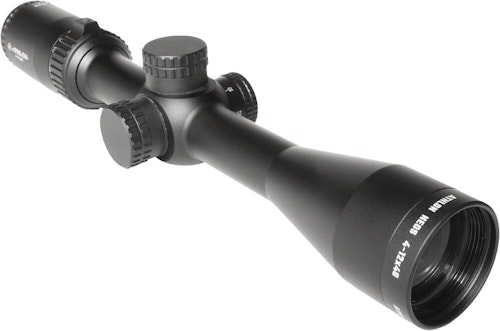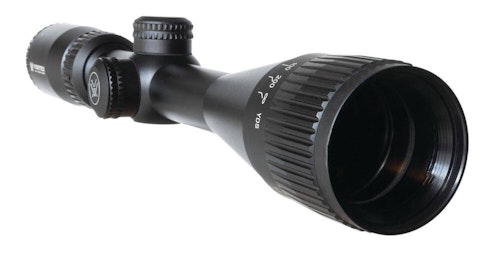Shooters all want to find that special deal, a thoroughbred in the highly hyped herd of bargain-basement options destined for the glue factory. Unfortunately, when it comes to longevity and performance, our parents were onto something with their familiar warning that, “You get what you pay for.”
Their advice is particularly true when it comes to hunting optics. What mom and dad did not foresee, however, is a revolution in technology and manufacturing that accelerates each day. Tolerances continue to shrink in CNC manufacturing, new materials are being developed and computer-aided design is boringly routine. Prototypes churned out of 3D printers slice the time needed to bring advances to market to weeks instead of months or years.
As a result, the performance of some low-priced riflescopes today is quickly approaching what you expected from top- or middle-tier models only a decade or two ago. That’s not always the case, but the clarity and reliability is sometimes shocking.
That makes a close look at three current 4-12x40mm riflescopes that don’t break the bank worthwhile, although there’s no denying the advantages of going with a high-end optic. The added cost may be high but their performance and ability to deliver for years make them worth the money. Now that the disclaimer is out of the way, let’s start with the breakdown.
Common Features
All three of the riflescopes reviewed have 1-inch main tubes and 40mm objectives, leveling the playing field when comparing light gathering and transmission abilities. Each is a second focal plane zoom from 4 to 12X and made in China.
Caps protect windage and elevation adjustment dials on the optics and point of aim moves ¼-MOA with each click. All passed with flying colors atop a 6.5 Creedmoor-chambered rifle in drills and the repeatability exercise tested by walking the point-of-aim/point-of-impact box across the target at 100 yards.
Diopters are adjustable and nitrogen purged to prevent fogging. Each comes with a lifetime warranty. Some conditions can apply if you ever need to exercise the option, depending on the manufacturer, although the fact that the companies stand behind optics that will suffer abuse speaks volumes about the build.
Of particular note is the fact that these tubes aren’t as wide as today’s popular 30mm models. That smaller diameter reduces the maximum amount of light that can pass from the objective and arrive at the eyepiece. The difference is mathematically significant, although internal components, along with glass and coatings, play a critical role in what is witnessed when behind the trigger.
That thinner tube, however, was the industry standard for decades and it still works well. The machinery, dies and specs have been around long enough that the dimension likely plays a role in a lower price. The fact less raw material is required doesn’t hurt either.
Redfield Rebel
Yes, Redfield is finally back, hopefully to stay under the Academy Sports + Outdoors company umbrella. The firm, established in 1859 by John Hill Redfield and passed on to his son, bounced around like a hot potato after the family sold it in the 1990s. In fact, it’s completely vanished several times since then. It’s nice to have the familiar name back in the optics space.
Wearing an MSRP of $149.99, the Redfield Rebel riflescope is the least expensive of the trio. It weighs 1.31 pounds and has an overall length of 13.58 inches. It features multicoated low-dispersion lenses that have a very slight red tint when light strikes them at the right angle.
Parallax setting is fixed at 100 yards. It is the only optic of the three that did not have adjustment.
A modest speed bump on the magnification ring ensures a positive grip in inclement weather. Firm, palpable, audible clicks provided reassuring feedback with each point-of-aim adjustment.
It struggled in acquiring targets in the darkest corners of a forest before dawn. The problem disappeared fast, but dark, low-contrast areas are not where this riflescope shines.
Interestingly, it led the field-of-view race at all magnifications. At 4X it covers 32.7 feet downrange and dialed up to 12X there’s still 10.8 feet visible. Eye relief was the longest of the other scopes tested, but it varies by nearly .5-inch throughout the magnification range. That could make getting a cheek weld to deliver long-distance shots a real challenge, particularly without an adjustable parallax.
The sleek profile, no-nonsense design and solid performance — admittedly not up to some cutting-edge models we’ve tested — will make the Redfield Rebel 4-12x40mm a solid choice for some customers. It’s a great entry-level scope that can perform admirably for years or even as a backup. It’s ideal on “truck” guns that take a beating, where most of the missions are at or after dawn. There’s no doubt that in the right hands it will deliver.
Athlon Neos Center X
The Athlon scope performed well in those same low light corners and enthusiasts accustomed to traditional placement of the parallax adjustment knob will be at home behind this optic. Point-of-aim adjustments were firm, also providing a palpable and nearly audible click with each turn. That kind of “timing” certainly isn’t mandatory, although it is confidence building.
That extra knob for parallax, however, gives it a bulkier appearance than the Redfield, despite the fact it ties for lightest among the trio and was shortest in overall length. It’s a solid unit and operated perfectly in testing, which was yet another pleasant surprise.
There was one drawback, though. A solid metal bump or protrusion at the bottom of the scope contacted the one-piece base on the bolt-action rifle during mounting. At 100 yards, the pressure and/or slight cant didn’t shift vertical shot placement, but that ever so slight variance could prove frustrating as distance is stretched.
I’m not sure if that’s where the company injects the nitrogen to minimize fogging or synchronize components, but it could exert pressure independently of the rings. The solutions are simple — use a two-piece base or higher rings. Its position on the lower left at the turrets might also be a consideration if you own a southpaw-friendly rifle.
Regardless, it’s a solid unit, and like all those tested, free of the aberrations that once plagued budget optics.
Vortex CrossFire II
The Vortex is the overall winner when it comes to collecting usable light in dim — bordering on dark — conditions. It comes at a cost, though, with the highest MSRP of $239.99.
Eye relief is the longest among the three scopes, at 3.9 inches, but it remains there whether your magnification is set at 4X or 12X. The CrossFire II is the only optic tested that did not have a speed bump on the magnification ring for aided grip during gloved use. Texturing there, however, is extremely generous, likely why the company eliminated it when the original CrossFire I was upgraded.
Focus is manual and adjusted on a ring surrounding the objective lens. Doing so handles the parallax variable. In testing it was smooth, yet stingy enough to prevent inadvertent changes in the field.
This is, however, the first Vortex to come across this testing bench in which the windage and elevation knobs didn’t provide the kind of feedback the firm usually delivers. It could just be a fluke or too much lubricant delivered by a new worker. It still passed all adjustment tests with flying colors, but the departure from norm by a company that builds scopes with watchmaker precision is interesting.
The Winner?
All the optics were crystal clear and, as expected, their performance in challenging conditions improved with price.
Hunting isn’t the kind of one-size-fits-all pursuit that makes defining the “ultimate” possible. The Redfield is straightforward with minimal adjustments that lend itself to fast, snap shots at moderate distances. The Athlon, on the other hand, is slightly slower, but makes precision easier at distance. It’s similar to the Vortex, but the constant eye relief of the CrossFire provides an advantage.
It all comes down to personal preference, application and budget. With the warranties available there is one thing for certain: You can be comfortable recommending any of the three to customers on a tight budget.










